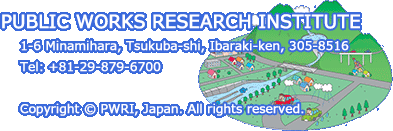Development of design technique for disaster prevention facilities against recently more frequent and intense water hazards

In recent years, intensive and heavy rainfalls in local areas cause frequent floods that is beyond the capacity of facilities.
Levees are destroyed by overflow and seepage, and river structuresare damaged by high-speed flow. In addition, due to the 2011 Great East Japan Earthquake, working on tsunami disasters has
become an urgent issue.
Furthermore, the technology capable of responding to hydrographic changes such as massive waves caused by the low-pressure is required,
because frequent low-pressure system developing into a powerful level equal to typhoon due to climate change is expected to approach the coastal area facilities.
However, the research has not been fully conducted to establish technologies to make higher resilience against devastating destruction. For this reason, in this research, we develop
technology for structural measures to mitigate damages against the new stage of water-related disasters and massive earthquake/tsunami caused by climate change in consideration
of the external force of disaster at the level of reaching maximum and causing shocking destruction. In order to achieve these goals we will work on the following research topics.
- ①Development of technology for evaluation/strengthening river levees against overflow and erosion
- ②Development of technology for evaluation/investigation of safety of river levees against water permeation.
- ③Development of technology for evaluation of impact of tsunami on structures and design method
- ④Development of technologies appropriate for hydrographic changes due to climate change













